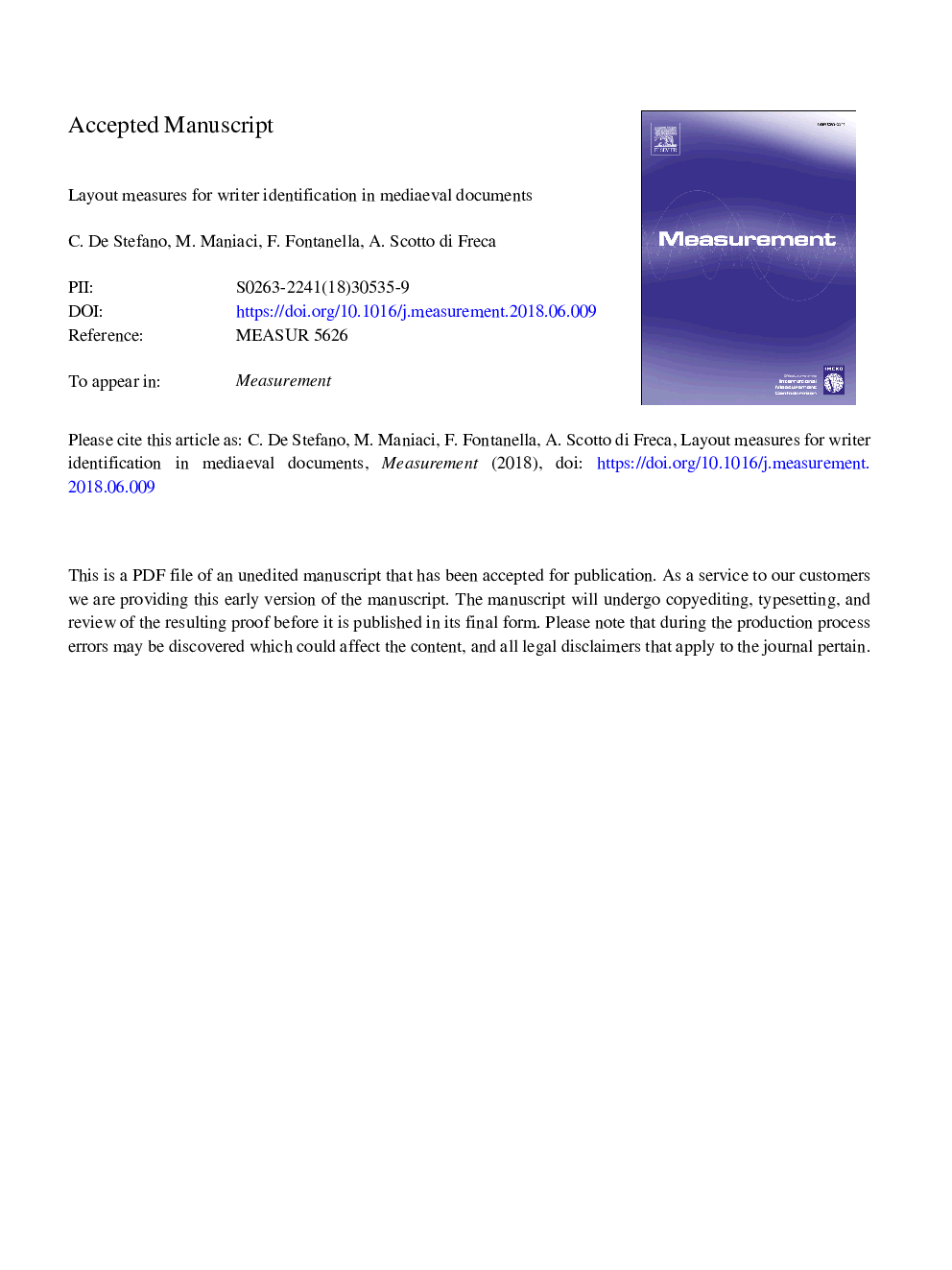| Article ID | Journal | Published Year | Pages | File Type |
|---|---|---|---|---|
| 7120703 | Measurement | 2018 | 36 Pages |
Abstract
Paleography aims to study ancient documents, with the identification of the writer hands being one of the most important problems. Over the years, experienced palaeographers have devised many methodological approaches to writer identification. These methodologies are based on traditional palaeographical tools to measure quantities such as letter heights and widths, distances between characters and angles of inclination. In this paper we present a novel approach in which basic layout measures are used for identifying the writers of a single medieval Latin book. The proposed measures take into account some general properties related to the organization of the whole page (such as margins, distance between columns, etc.), and some specific properties characterizing the ability of the writer to exploit the available space and to distribute the text in each row. The experimental results, performed on a set of digital images from a Latin copy of the whole Bible of the XII century, confirmed the effectiveness of the proposed method. We have also tested our approach on another bible obtaining similar results.
Keywords
Related Topics
Physical Sciences and Engineering
Engineering
Control and Systems Engineering
Authors
C. De Stefano, M. Maniaci, F. Fontanella, A. Scotto di Freca,
